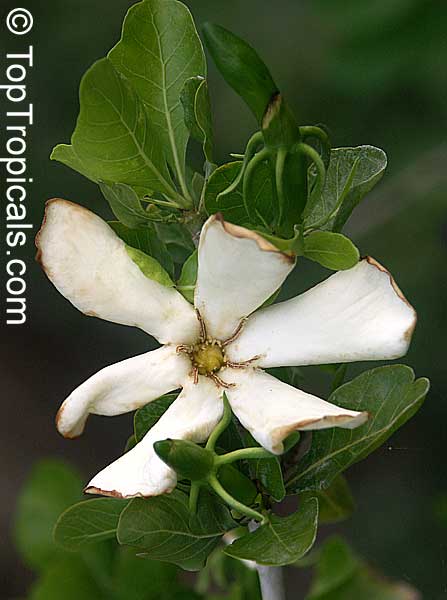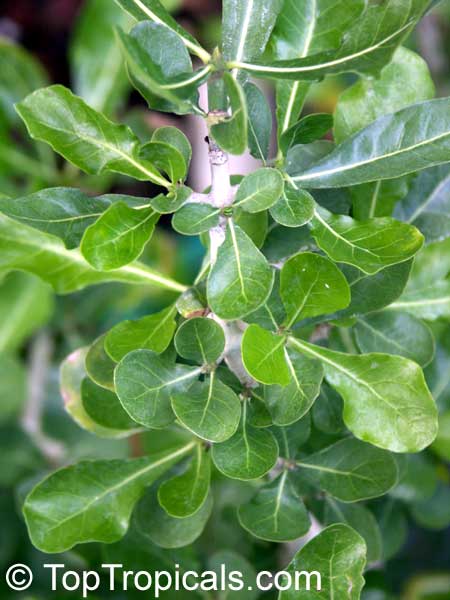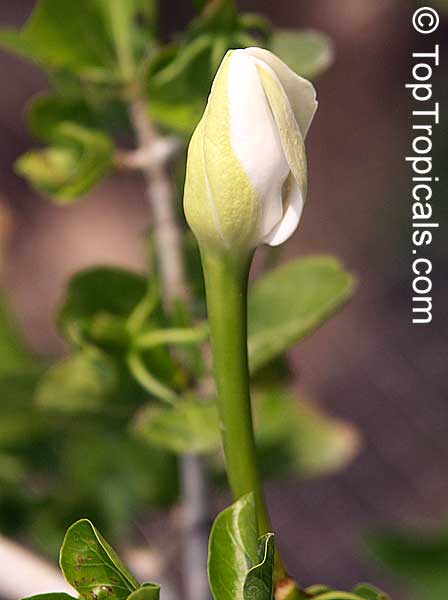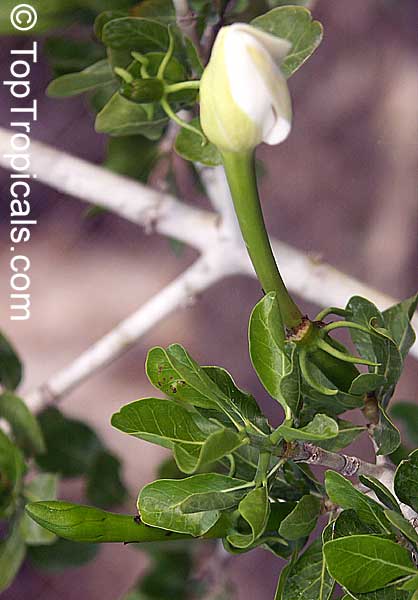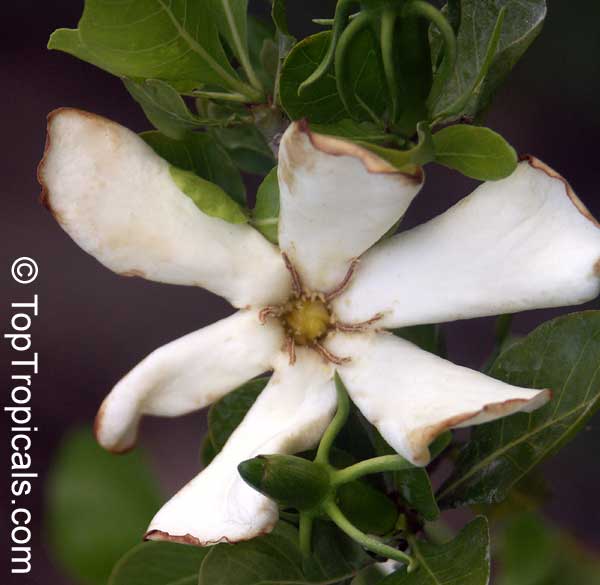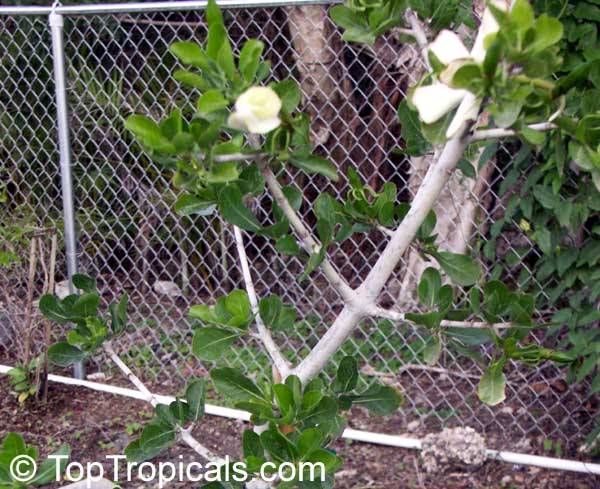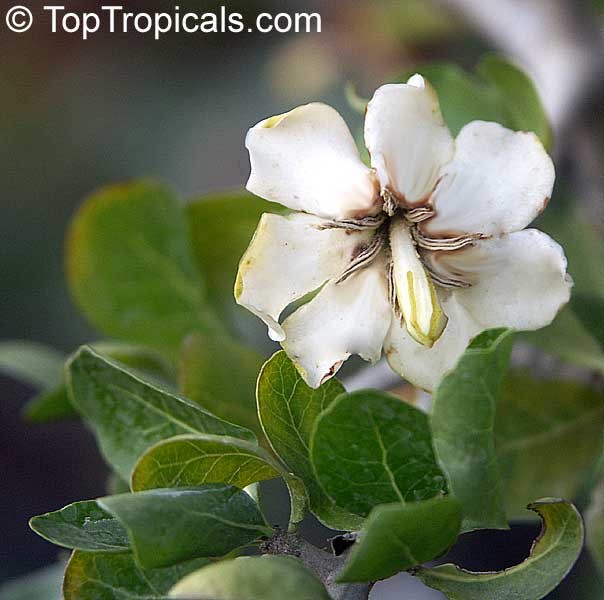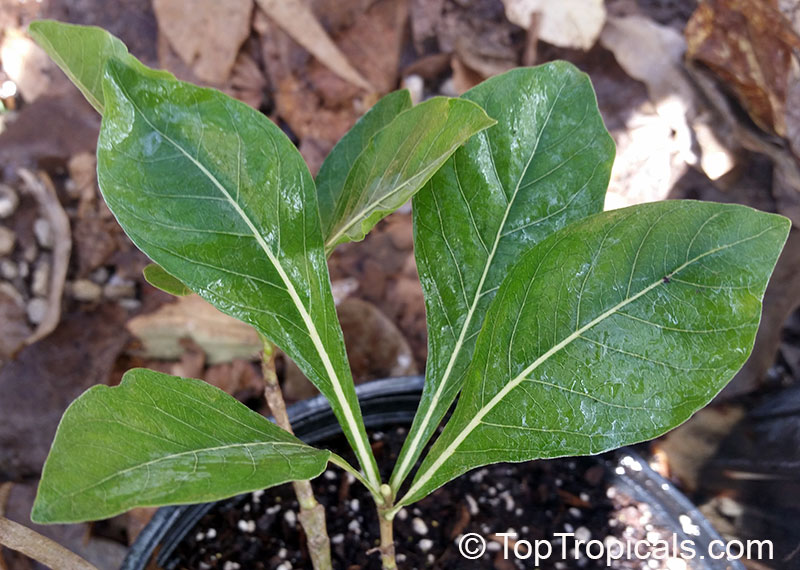Gardenia cornuta (Natal Gardenia)
Top Tropicals Plant Encyclopedia
Botanical names: Gardenia cornuta, Gardenia ternifolia
Common names: Natal Gardenia, Horned Gardenia, Wilde-appel
Family: Rubiaceae
Origin: Africa











Slow-growing shrub or multi-branched small tree, a bit succulent-looking due to its growth habit ans tiny leaves. It will grow eventually 7 to 10 ft tall, with erect and spreading main branches, branchlets sometimes with thick thorns, a trunk that is whitish grey, the bark is smooth, often flaking into thin peels. Spectacular, large white and yellow flowers with their sweet scent attract passersby from a distance to this small, much-branched tree. Leaves are smooth and crowded at the ends of twigs, usually in whorls of three, light glossy green, short-stalked, 1-2" size, oval to almost round. Flowers are solitary at the ends of short, rigid branches, borne November to March, white turning yellow, short-stalked, with a long, slender greenish tube, and spreading white lobes. The calyx is very unusual, with long, narrow lobes arising from its sides and not at its apex. The flowers are followed by smooth, glossy, golden yellow fruits. They are attractive, pear-shaped, woody, glossy golden yellow, hard and flattened, usually produced in large quantities between February and August. The long, slender flower tube and the white, sweetly scented flowers suggest that insects like moths and butterflies pollinate this plant. Decorative fruiting branches placed in a vase may remain fresh for up to month, since branches are able to absorb water readily. In traditional medicine, fruit and roots are boiled and used as an emetic. This very neat and decorative small tree is best suited for a spot in the garden where it will stand alone so that it gets all the attention it deserves, more especially when in flower. The genus name Gardenia was named after Alexander Garden, a medical doctor and naturalist from South Carolina. The species name cornuta means horned; perhaps referring to the remnants of the persistent calyx lobes of the fruit. This species was first collected in 1870 but it was only after 35 years that it was eventually described in 1906. The genus Gardenia has about 60 species in tropical and warm parts of the Old World, seven in southern Africa. Gardenia cornuta is not widely found in gardens. Another related species, Gardenia thunbergia, looks much alike due to similar growth habit and small leaves (which are pointed unlike rounded leaves of g. cornuta) and is another attractive species, worthy of cultivation. Because of its growth habit and slow growth rate gardenia cornuta is a good bonsai plant. Very closely related specie - Hyperacanthus amoenus (Gardenia amoena).
Similar plants: Gardenia cornuta (Natal Gardenia)
- Atractocarpus fitzalanii (Native Gardenia)
- Gardenia brighamii (Native Hawaiian Gardenia Nau)
- Gardenia carinata (Golden Gardenia)
- Gardenia erubescens (Golden Fruit Gardenia)
- Gardenia gjellerupii (Thai Gardenia)
- Gardenia hydrophila (Mok Luang)
- Gardenia jabiluka (Gardenia)
- Gardenia jasminoides ''Four Seasons'' (Four Seasons Gardenia)
- Gardenia jasminoides (Bush Gardenia)
- Gardenia mutabilis (Golden Gardenia)
